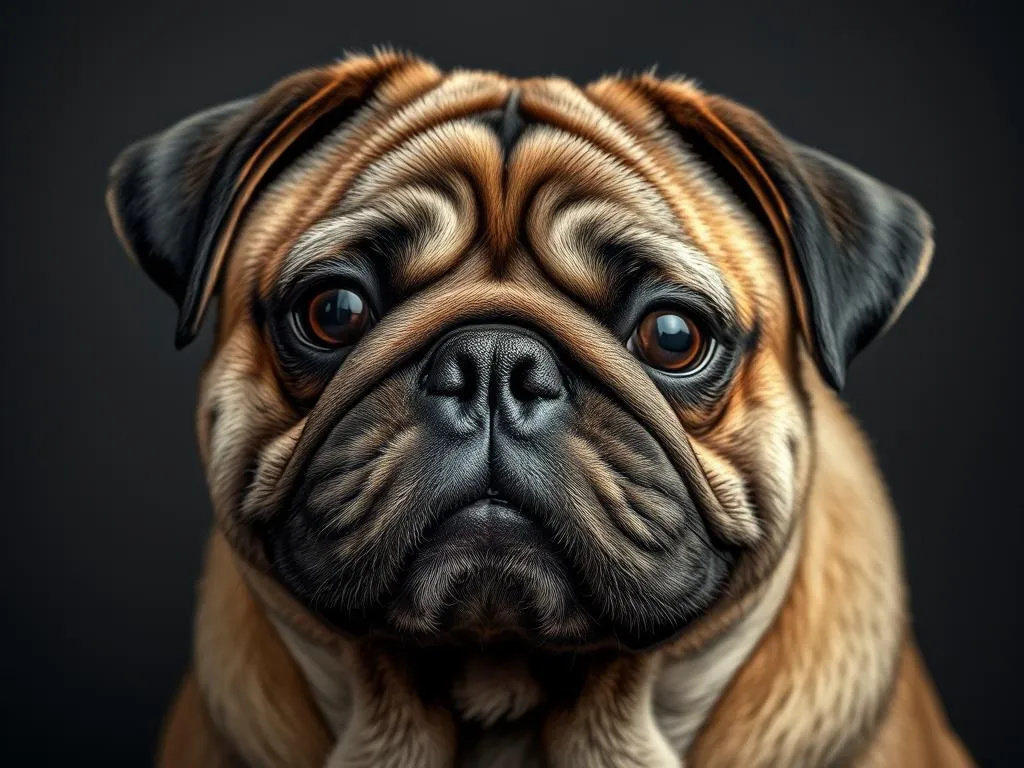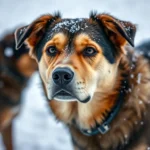
Introduction
Dog breeds represent diverse genetic backgrounds, physical traits, and temperaments that cater to various lifestyles and preferences among dog owners. Understanding these characteristics is crucial for responsible pet ownership and ensuring a harmonious relationship between humans and their furry companions.
Among the multitude of dog breeds, the brindle pug stands out for its striking appearance and charming personality. This unique color variation of the pug adds a layer of appeal that many dog lovers find irresistible. The brindle pug, with its distinct stripes and playful demeanor, has gained popularity, making it a sought-after breed for families and individuals alike.
In this comprehensive guide, we will delve deep into the world of the brindle pug—exploring its history, characteristics, grooming needs, health considerations, and much more.
Understanding the Pug Breed
History of the Pug
The pug boasts a rich heritage that traces back to ancient China, where it was highly regarded by emperors. These small, sturdy dogs were bred for companionship and were often pampered by their royal owners. Over time, the breed made its way to Europe, where it quickly captured the hearts of aristocrats and commoners alike.
As the pug evolved, it maintained its charming personality and affectionate nature, making it a beloved family pet across various cultures. The brindle pug is a more recent development within the breed, emerging from genetic variations that influence coat color.
General Characteristics of Pugs
Pugs are small, compact dogs, typically weighing between 14 to 18 pounds and standing about 10 to 14 inches tall. They have a distinctive wrinkled face, a curled tail, and a muscular body. Their playful and affectionate demeanor makes them excellent companions.
While pugs are generally sociable and good-natured, they can be prone to certain health issues, particularly related to their brachycephalic facial structure. Common health concerns include respiratory problems, obesity, and skin conditions.
The Brindle Coat in Pugs
What is a Brindle Coat?
Brindle coloration is characterized by a mix of dark and light stripes, creating a unique, tiger-stripe appearance. This pattern can vary from dog to dog, with some brindle pugs exhibiting more pronounced stripes than others.
Compared to other pug coat colors, such as fawn or black, the brindle coat provides a distinctive and attractive option for potential pug owners. The brindle pug’s unique appearance often draws admiration and curiosity from those unfamiliar with the breed.
Genetics of the Brindle Coat
The genetic makeup that leads to brindle coloration in pugs is a result of specific alleles that influence coat patterns. The brindle gene interacts with the base color of the pug, leading to the beautiful stripe patterns that define this variation.
This genetic trait is inherited, meaning that if one or both parents carry the brindle gene, there’s a chance that their puppies will also have brindle coats. Understanding these genetics can help prospective owners when seeking to adopt or purchase a brindle pug.
Care for Brindle Coats
Caring for a brindle pug coat involves regular grooming to keep the fur healthy and shiny. Here are some tips for maintaining a brindle pug’s coat:
- Brushing: Use a soft-bristled brush to remove loose hair and minimize shedding. Regular brushing also promotes healthy skin.
- Bathing: Bathe your pug every few months or as needed, using a gentle dog shampoo. Avoid over-bathing, as this can strip natural oils from their skin.
- Skin Care: Keep an eye on skin folds and wrinkles, as they can trap moisture and lead to infections. Clean these areas regularly with a damp cloth.
Temperament and Behavior of Brindle Pugs
Personality Traits
The brindle pug shares the same delightful personality traits as other pugs. They are known for being sociable, affectionate, and playful. Brindle pugs tend to be friendly with children and adults alike, making them excellent companions for families.
While they may exhibit a stubborn streak, they are generally eager to please, which can make training a rewarding experience. Their playful nature often leads to amusing antics that can keep their owners entertained for hours.
Training and Socialization
Training a brindle pug requires patience and consistency. Positive reinforcement strategies, such as treats and praise, work best with this breed. Early socialization is crucial to ensure they grow up to be well-adjusted adults. Exposing them to various environments, people, and other animals helps develop their social skills.
Interaction with Families and Other Pets
Brindle pugs typically thrive in family settings. Their gentle and affectionate nature makes them good companions for children. However, supervision is essential, especially with younger kids, to prevent accidental injuries.
When it comes to other pets, brindle pugs generally get along well with cats and dogs, particularly if they are introduced at a young age. Their sociable demeanor allows them to adapt to various living situations and pet dynamics.
Health Considerations for Brindle Pugs
Common Health Issues
While brindle pugs are generally healthy, they are susceptible to several health issues common in the breed. Some prevalent concerns include:
- Brachycephalic Airway Syndrome: Due to their short snouts, pugs can experience breathing difficulties, especially in hot weather.
- Obesity: Pugs love to eat, which makes them prone to weight gain. Maintaining a healthy diet and regular exercise is crucial.
- Skin Problems: Their skin folds can trap moisture and lead to infections. Regular cleaning helps prevent these issues.
Regular Veterinary Care
Routine veterinary check-ups are essential for maintaining the health of your brindle pug. Regular visits allow for early detection of potential health problems. Vaccinations and preventive care, such as flea and tick prevention, should be part of their healthcare regimen.
Diet and Nutrition
A balanced diet is vital for the health of a brindle pug. Owners should focus on high-quality dog food that meets their nutritional needs. Portion control is crucial to prevent obesity, so following feeding guidelines provided by your veterinarian is advisable.
Recommended foods for brindle pugs often include a mix of proteins, healthy fats, and carbohydrates. Consider dividing their meals into two or three portions throughout the day to promote healthy eating habits.
Living with a Brindle Pug
Ideal Living Conditions
Brindle pugs adapt well to various living conditions, whether in an apartment or a house with a yard. They do not require extensive space but benefit from a cozy environment where they can feel secure.
Regular access to outdoor areas for play and exercise is vital, particularly if you live in an apartment. Pugs are not overly active but do enjoy short walks and playtime.
Exercise Needs
While brindle pugs are not high-energy dogs, they still need regular exercise to maintain their health. Short, brisk walks and play sessions are ideal. Mental stimulation is also crucial; interactive toys and puzzles can provide a great outlet for their energy.
Adopting or Buying a Brindle Pug
When considering a brindle pug, it’s essential to find a reputable breeder or rescue organization. Look for breeders who prioritize health testing and have a good track record with their puppies. When adopting, ensure that the organization provides a clear understanding of the pug’s background and health.
When selecting a brindle pug, observe the puppy’s temperament and behavior. Look for signs of a healthy, socialized dog, such as curiosity and playfulness.
Frequently Asked Questions (FAQs)
-
How do brindle pugs compare to other pugs?
Brindle pugs share the same characteristics as other pugs, with the primary difference being their unique coat coloration. -
What is the life expectancy of a brindle pug?
The average lifespan of a pug, including brindle variations, is typically between 13 to 15 years, with proper care and health management. -
Are brindle pugs hypoallergenic?
No, brindle pugs are not hypoallergenic. They shed like other pugs, which can trigger allergies in sensitive individuals. -
How much do brindle pugs typically cost?
The price of a brindle pug can vary depending on the breeder and location, generally ranging from $1,500 to $3,000.
Conclusion
The brindle pug is a charming and unique breed that captivates dog lovers with its playful personality and striking appearance. Understanding the history, characteristics, health needs, and care requirements of this breed is essential for any potential owner.
Owning a brindle pug brings joy and companionship, with their affectionate nature making them beloved members of the family. As you consider welcoming a brindle pug into your home, remember to embrace the responsibilities that come with dog ownership, ensuring a happy and healthy life for your new furry friend.









